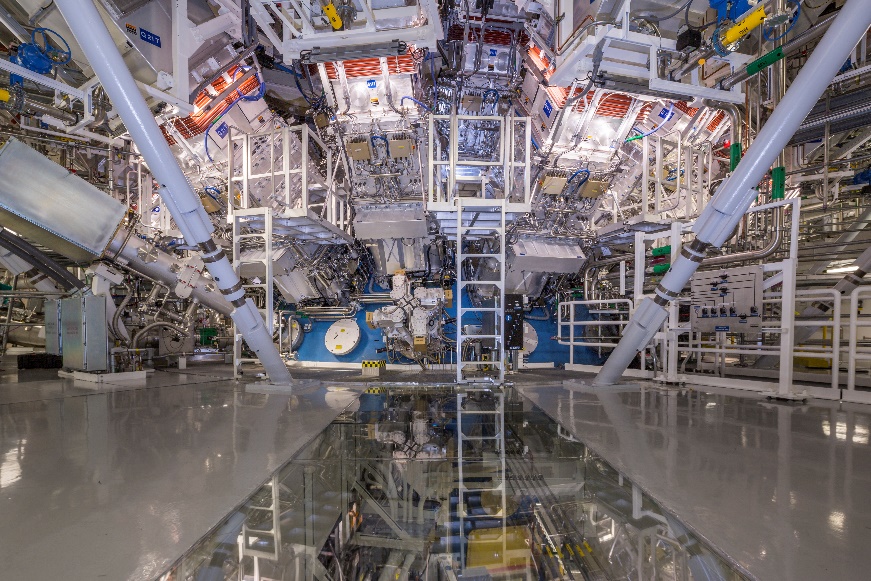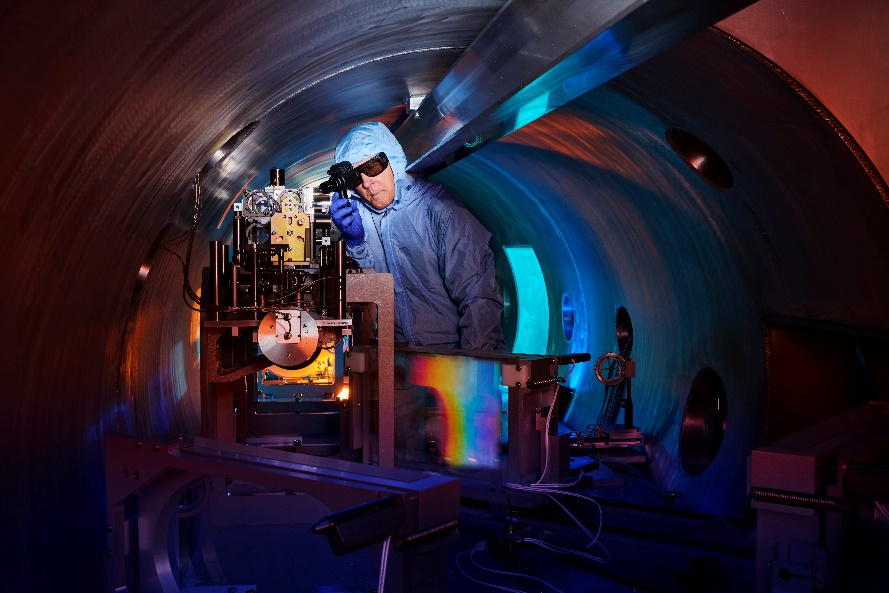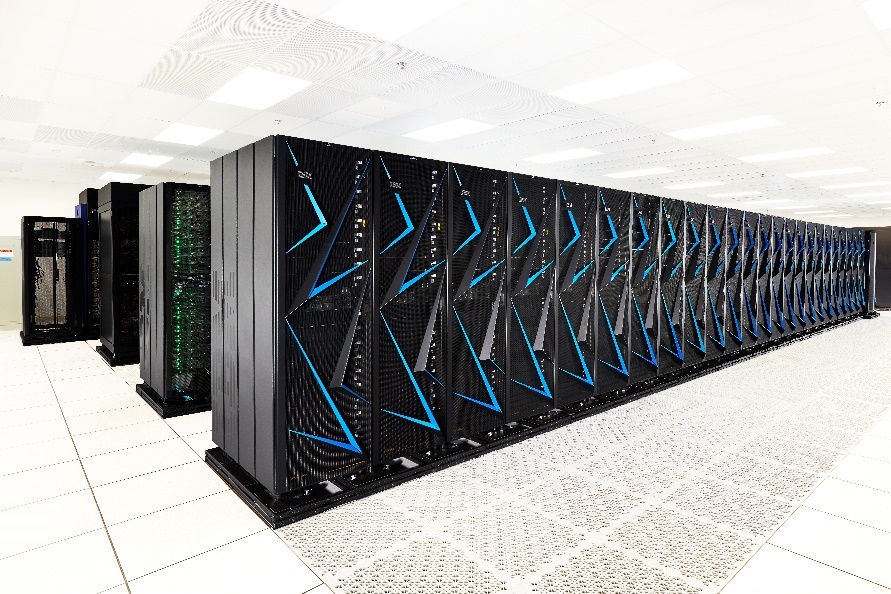User Facilities and Capabilities
HEDS researchers at LLNL benefit from access to world-class experimental facilities, which are also available to students and faculty from collaborating institutions, providing a venue where early-career scientists gain hands-on experience using sophisticated tools. These academic collaborations enhance the HEDS research environment at LLNL and create opportunities to engage future researchers who want to explore careers in this rapidly evolving field.
LLNL’s resources also include sophisticated optical and x-ray diagnostic platforms that enhance experimental capabilities, and users often spark new ideas regarding how to enhance these tools. In addition, collaborators benefit from access to LLNL’s supercomputing resources—and the predictive modeling and simulation capabilities they enable for HEDS research.
National Ignition Facility
The National Ignition Facility (NIF) is the world’s largest and most energetic laser facility ever built. NIF is also the most precise and reproducible laser as well as the largest optical instrument. The giant laser has nearly 40,000 optics that precisely guide, reflect, amplify, and focus 192 laser beams onto a fusion target about the size of a pencil eraser. NIF became operational in March 2009 and demonstrated fusion ignition for the first time in a laboratory setting in 2022. NIF is the size of a sports stadium—three football fields could fit inside.
Jupiter Laser Facility
The Jupiter Laser Facility (JLF) is an intermediate-scale laser facility dedicated to high-energy density science. It is part of LaserNetUS, a network of high-intensity laser systems across North America. JLF hosts three operating laser systems and target areas: Janus, Titan, and COMET. Together, these three systems make JLF the fifth-highest energy research laser in the United States. Proposals can be submitted to LaserNetUS here.
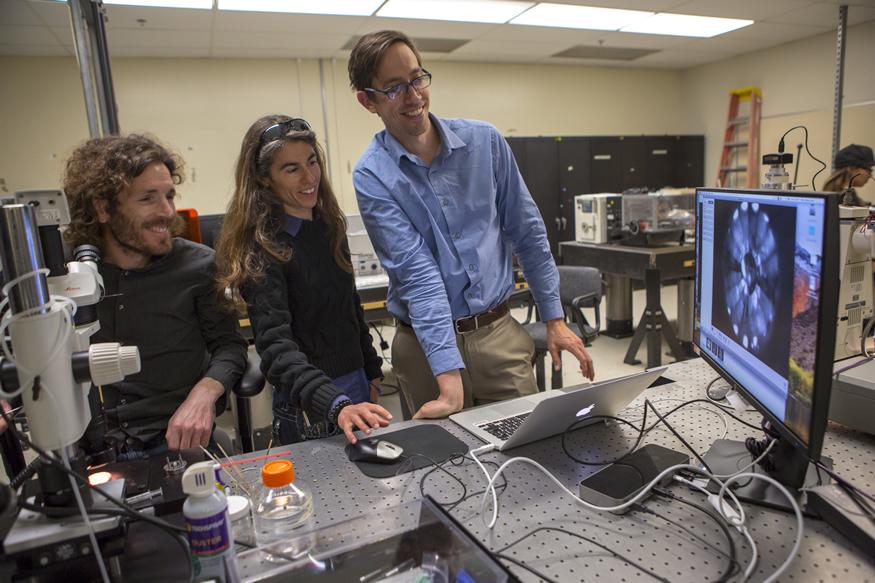
HEDS Technology Facility
Innovative experiments often require testing and trying before viable concepts for new experiments and targets emerge. The HEDS Center Technology Facility, located near the Jupiter Laser Facility, offers HEDS Center physicists and outside collaborators tools, instrumentation, and support. It is also a venue for early-career scientists to receive hands-on experience and training in experimental tools development.
Supercomputing Platforms
LLNL is home to some of the world’s most powerful supercomputers and boasts decades of expertise in designing, developing, deploying, and applying high-performance computing capabilities to various scientific problems. Livermore supports both classified and unclassified computing, and even has some specialized systems to support big data computing and other newer areas. Most of Livermore’s top-ranked supercomputers and computing experts are located in the Livermore Computing Center.
High Explosives Applications Facility
LLNL’s High Explosives Applications Facility, an explosives research and development Center of Excellence for the Department of Energy and National Nuclear Security Administration, is home to a two-stage gas gun that can propel objects at up to 8 kilometers per second and produce pressures of up to 500 gigapascals. Researchers can also probe a material’s microstructure at the facility, thanks to an x-ray diffraction capability installed there in 2014.
HEDS Diagnostic Tools
LLNL scientists develop new diagnostic tools, enhance the capabilities of existing diagnostics, and use these sophisticated diagnostic platforms during experiments aimed at studying matter under extreme conditions. For example, they use diagnostics to accurately capture data during experiments at LLNL’s National Ignition Facility (NIF), as well as other high-power laser facilities. Physicists and diagnostic engineers continue exploring ways to improve diagnostic capabilities that are key to advancing scientific understanding regarding HED environments.
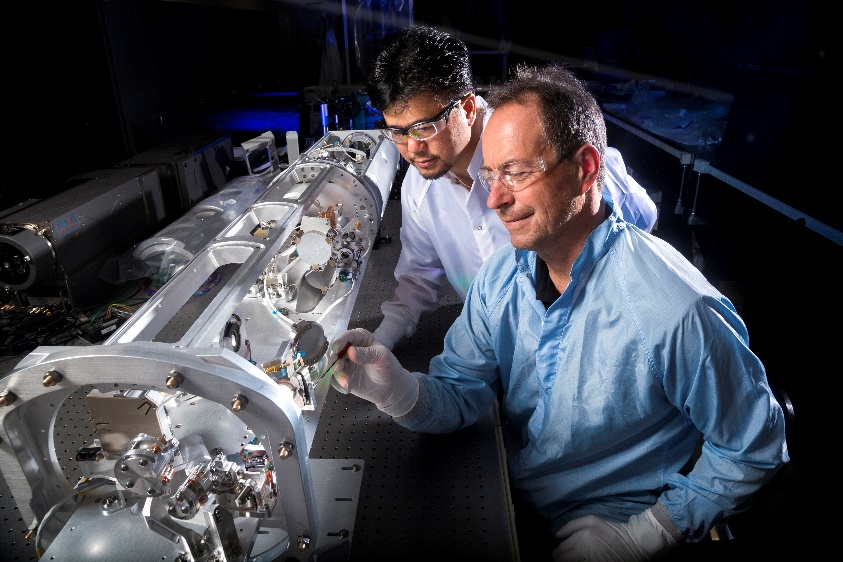
Optical Diagnostics
Contact:
- Steven Ross
- Ross36 [at] llnl.gov (Ross36[at]llnl[dot]gov)
Optical diagnostics are critical to the success of a wide range of HED physics experiments, providing a means to measure experimental parameters such as temperature, density, flow velocity, pressure, shock velocity, and laser coupling efficiency. Diagnostics fielded by LLNL researchers range from relatively simple imaging and spectroscopy diagnostics to highly complex diagnostic systems. Complex system examples include the Velocity Interferometer System for Any Reflector (VISAR) diagnostic and the Thomson scattering diagnostic, which use dedicated probe laser beams to interrogate conditions produced in HED experiments.
LLNL researchers develop and support optical diagnostics for major HEDS facilities, including NIF, Omega Laser Facility at the Laboratory for Laser Energetics, and the Z pulsed-power facility at Sandia National Laboratories—enabling new measurements and providing the highest quality experimental data possible. For example, the VISAR line-imaging diagnostic is currently fielded on the NIF, Omega, and Z resources. This versatile diagnostic enables high-precision documenting of dynamic compression experiments in HED conditions by recording the evolution of the velocity and optical properties of target components. This information is used to characterize the properties of materials in extreme density and temperature regimes, benchmark hydrodynamic simulations of inertial confinement fusion (ICF) implosions using supercomputers, discover new states of matter, test advanced quantum theory of condensed matter, and help scientists better understand (exo)planet formation and evolution.
Another key optical diagnostic currently fielded at NIF and on Omega is Optical Thomson Scattering. This diagnostic measures the spectrum of light scattered from a probe laser beam by the experimental plasma, providing a means to measure parameters like the electron temperature and density, and plasma flow velocity. Thomson scattering is used to improve our understanding of hohlraum performance in ICF experiments. It is also widely used in fundamental plasma physics research, such as examining interactions of counter streaming plasma flows.
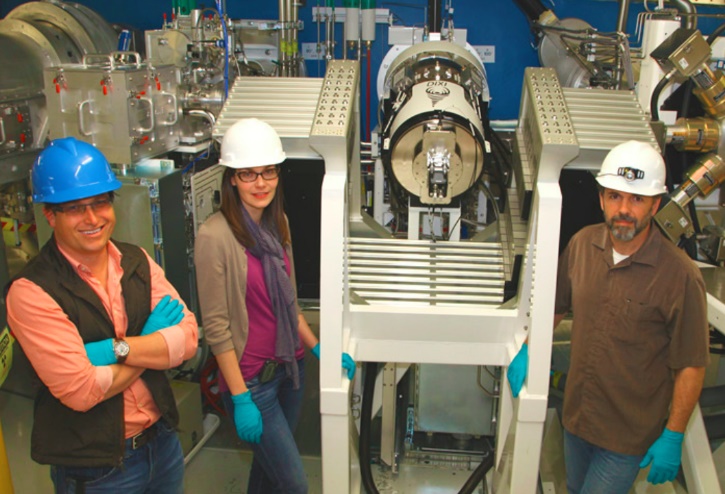
Xray Diagnostics
Contact
- Sabrina Nagel
- nagel7 [at] llnl.gov
X-ray diagnostics provide scientists with data at the spatial (micrometer) and temporal (picosecond) resolution needed to observe important phenomena that occur during HED experiments, including laser–plasma interactions and ICF implosions. These instruments measure target self-emission or use x rays generated by a backlighter to probe or radiograph dense matter.
For example, LLNL scientists collaborated with experts at two other research institutions to develop the Dilation X-ray Imager (DIXI), the world’s fastest x-ray framing camera, which can record two-dimensional x-ray emissions at less than 10-picosecond temporal resolution. DIXI uses pulse dilation technology (stretching of the electron signal) to achieve the high temporal resolution needed by HED researchers. It is now routinely used in ICF experiments at NIF, and since it is transportable and offers variable temporal resolution and record length, it can be used at other high-power laser facilities.
In addition, LLNL scientists developed the single-line-of-sight (SLOS) x-ray diagnostic—a multiple-image-sequencing camera capable of recording high-quality x-ray images of NIF capsule implosions, with shutter speeds as short as 35 picoseconds (trillionths of a second) apart. SLOS technology offers increased control, enabling scientists to capture a sequence of full-frame images with ultra-fast timing that sharpens image clarity.

